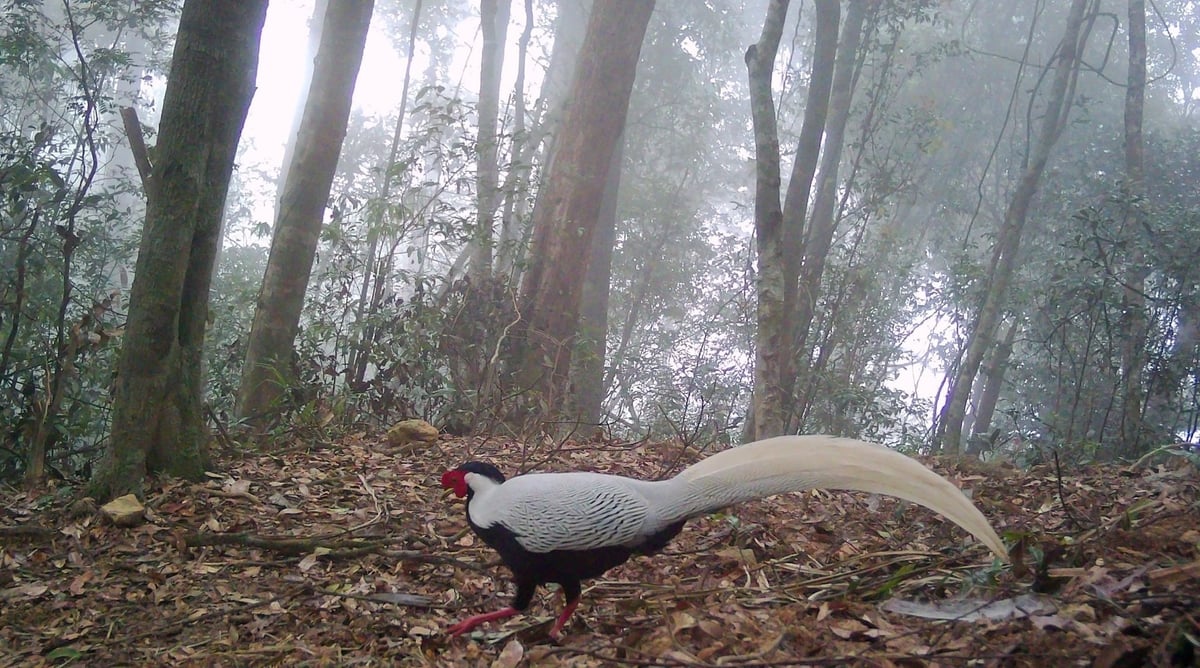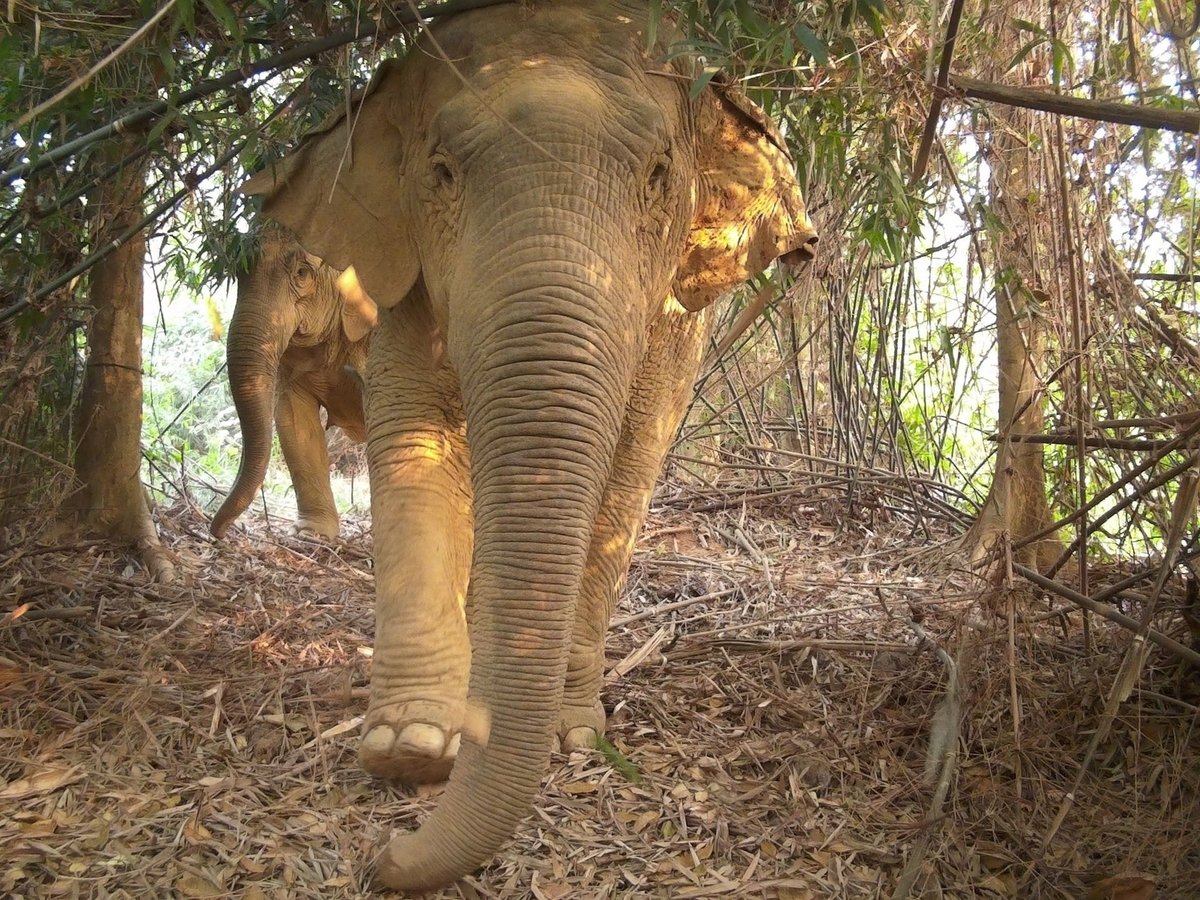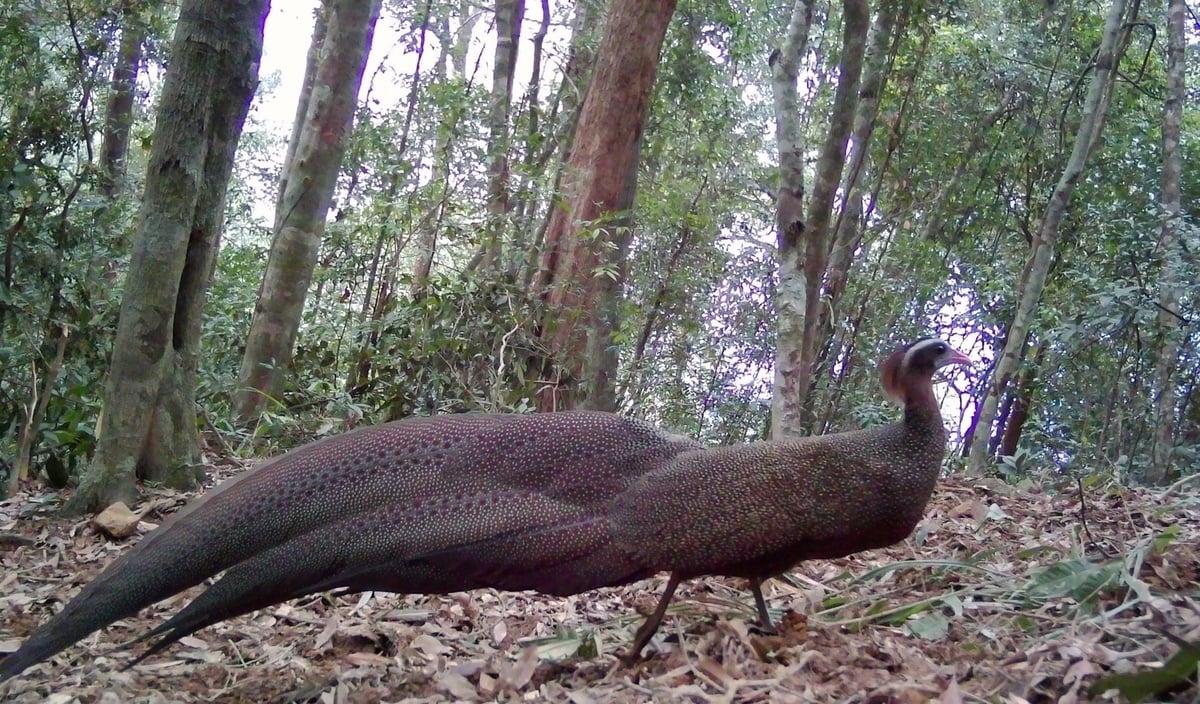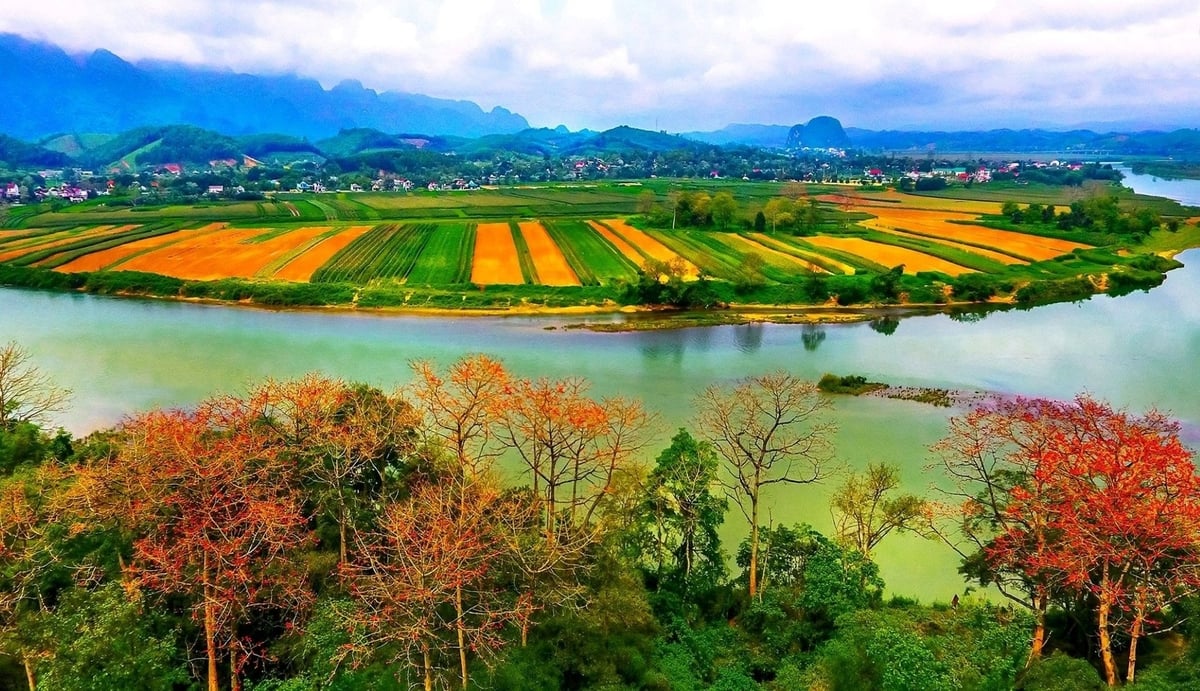December 1, 2025 | 10:08 GMT +7
December 1, 2025 | 10:08 GMT +7
Hotline: 0913.378.918
December 1, 2025 | 10:08 GMT +7
Hotline: 0913.378.918
For anyone who has once set foot in Western Nghe An, the pristine and majestic beauty of the Truong Son mountains is unforgettable. In this frontier land, Pu Mat National Park is not only one of Vietnam’s greatest biodiversity treasures but also a nurturing sanctuary for generations of Thai, Kho Mu, and Dan Lai people like the embrace of a mother. From the cool, crystal-clear streams and ancient Lagerstroemia forests to the sound of bamboo panpipes echoing in festive nights, Pu Mat National Park is both a vast living laboratory of nature and a shared home for humankind and countless species.

Pu Mat National Park is a biodiversity hub. Photo: Pu Mat NP.
With an area of more than 91,000 hectares, 98% of which is covered by forest, Pu Mat is regarded as one of the most important "green lungs" of the Northern Truong Son range. The park is home to 2,494 species of higher plants and nearly 1,000 animal species, including hundreds of rare and endangered species listed in the Vietnam Red Data Book and the IUCN Red List. Its primary forests, tropical evergreen rainforests, montane dwarf forests, and shrub grasslands form a multi-layered ecological tapestry so rich that each scientific survey often leads to the discovery of new species.
It was no coincidence that Pu Mat made history as one of the first sites where the Saola, a critically endangered species revered as the "Asian unicorn," was discovered. Other iconic names, such as the red-shanked douc, the northern yellow-cheeked gibbon, the Annamite striped rabbit, and the Owston’s civet, have also become symbols of its uniqueness. Many species exist only here, making Pu Mat an internationally recognized conservation hotspot.
Its river systems including the Giang River, Khe Thoi, Khe Bu, and Khe Choang nourish both wildlife and human life, while regulating the climate and supplying water to downstream communities. This vital watershed function has made Pu Mat the very lifeline of tens of thousands of households in the region.

Elephants in Pu Mat National Park. Photo: Pu Mat NP.
If the forest is Pu Mat's body, then the Thai, Kho Mu, and Dan Lai peoples are its soul. The Thai, who make up nearly 67% of the buffer zone population, have lived for centuries in stilt houses beside terraced fields under the shade of the great forests. Their communal lifestyle, the Xang Khan festival, traditional bamboo dances, and Lam folk songs not only shape a unique cultural identity but also reflect the inseparable, flesh-and-blood bond between humans and nature.
For generations, the forest has provided not only timber, rattan, bamboo, and other forest products but also nourished a distinctive culinary culture: bamboo-tube rice, Giang River fish, bitter bamboo shoot soup, and jar-brewed rice wine. The brocade weaving of Thai women, with its vibrant motifs, is more than a tourism commodity. It is a cultural map woven with memory and skillful hands.
For the Dan Lai, a small ethnic minority living mainly in Co Phat and Bung villages, the mountains and forests of Pu Mat serve as a fortress shielding them from the harshness of nature. From hunting and gathering to shifting cultivation on steep slopes, every livelihood has been intertwined with the forest’s rhythm.
The richness of both natural and cultural resources gives Pu Mat great potential for developing community-based ecotourism - a model that links conservation with local livelihoods. Visitors can embark on journeys that are not only about sightseeing but also about living with the villagers, listening to stories of the forest, trying their hand at brocade weaving, and preparing traditional dishes.

Tri sao is one of the hundreds of rare animal species in Pu Mat National Park. Photo: Pu Mat NP.
Natural wonders such as Khe Kem Waterfall, the Lagerstroemia forest, Moc Stream, and Pha Lai Dam not only captivate visitors with their pristine beauty but also serve as living classrooms that raise awareness of environmental protection. Tourists soon realize that if the forest disappears, the waterfalls will dry up, the rivers will turn murky, and indigenous culture will fade away.
Nghe An Province and the Management Board of Pu Mat National Park have introduced various policies to support community-based tourism training, develop OCOP products from brocade and forest products, and organize traditional festivals.
The bond between Pu Mat and local people is not only reflected in daily livelihoods but becomes most evident during harsh natural disasters. The historic flood at the end of July 2025 was a striking example. As floodwaters rose and landslides swept into houses, people were left panicked and helpless. At that moment, nearly 1,000 residents from Tien Thanh, Quyet Tien, and Hamlet 4 of Con Cuong Commune sought refuge in Pu Mat National Park.

Pu Mat National Park staff on a patrol, setting up a camera trap. Photo: Pu Mat NP.
The rows of buildings in the administrative area - rescue center, the meeting halls suddenly turned into temporary shelters for the elderly, women, and children. More than 60 rooms were arranged, with the park’s staff and local authorities taking care of every meal, every can of water, every night’s sleep for the people. In times of hardship, Pu Mat is not only "Mother Nature" for countless species, but also a safe haven for human beings - a living testimony to the deep connection between nature conservation and social well-being.
That image reminds us that protecting the forest is not only about preserving green trees or rare animals, but also about safeguarding a natural fortress against disasters and floods, ultimately protecting human lives.

A Truong Son muntjac captured by a camera trap. Photo: Pu Mat NP.
Even so, Pu Mat is still facing many challenges: pressures from illegal resource exploitation, the difficult livelihoods of buffer-zone communities, climate change, and the consequences of poorly planned tourism development. If the forest is viewed only as a “timber warehouse” or a “short-term profit mine,” then before long, this green lung will be exhausted.
The solution cannot be separated from the principle of “conservation linked with sustainable development.” This means every tourism program, handicraft product, and research activity must be accompanied by a commitment to environmental protection and the preservation of biodiversity. Local communities regarded as "forest guardians" must receive fair benefits from these resources so that they become active partners in conservation.
Looking back, Pu Mat is not just a national park on a management list but a living entity where people and nature have been intertwined for generations. This bond is like flesh and blood: the forest nurtures people with water, rice, fish, and bamboo shoots, while people protect the forest through indigenous knowledge, sacred forest rituals, and rain-praying festivals. Any separation between the two will inevitably harm both.

A corner of the buffer zone of Pu Mat National Park. Photo: Quang Dung/Nghe An Newspaper.
The future of Pu Mat depends on whether we can preserve this connection. We can preserve it by respecting the right of all species to exist, ensuring that indigenous communities are not left behind in development policies, and keeping the forest not only green on the map but also green in the hearts of the people.
Pu Mat's 1,841-meter peak, touching the clouds quietly, continues its mission: regulating the climate, safeguarding water sources, nurturing culture, and extending its arms to protect lives whenever disasters and floods strike. That is why we must not only take pride in Pu Mat but also bear the responsibility to safeguard it, as if we were protecting the very lifeblood of our existence.
At the 36th ASEAN Senior Officials on the Environment Meeting (ASOEN 36), six new ASEAN Heritage Park nominations were endorsed (including three parks in Malaysia and three in Vietnam, among them Pu Mat National Park). This outcome will be further adopted at the ASEAN Ministerial Meeting on the Environment (AMME), scheduled for the first week of September.
Translated by Kieu Chi

(VAN) An increasing number of livestock farms are using biogas generators to create a source of renewable electricity, helping to save costs and mitigate environmental pollution.

(VAN) Small changes in rice cultivation, from irrigation methods and straw collection to input management, are paving a new way for Vietnam's agriculture in the journey toward emission reduction.

(VAN) With the project of converting biogas into renewable electricity, Australia is both helping pig farms reduce their energy costs by up to 25% and contributing to environmental protection.
![Hue aims for Net Zero: [1] Initial steps from green transportation](https://t.ex-cdn.com/nongnghiepmoitruong.vn/608w/files/huytd/2025/11/28/0853-anh-6-giao-thong-xanh-hue-094717_940-153724.jpg)
(VAN) For sustainable development, Hue City is implementing many solutions to promote green transportation, which is an important initial step on the journey to building a Net Zero Hue.

(VAN) Nghe An Province, one of the localities with the largest forest area in Vietnam, is set to gain significant benefits from the implementation of forest carbon credit payments.

(VAN) Circular agriculture helps Mekong Delta farmers cut greenhouse gas emissions while boosting incomes through efficient reuse of agricultural by-products.

(VAN) According to Mr. Vo Minh Thanh, Director of the Tay Ninh Department of Agriculture and Environment, Resolution 57 has created a new development pathway for the locality, shifting from traditional toward modern agriculture.